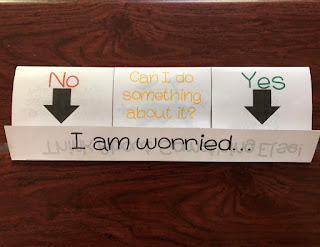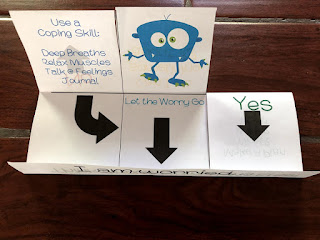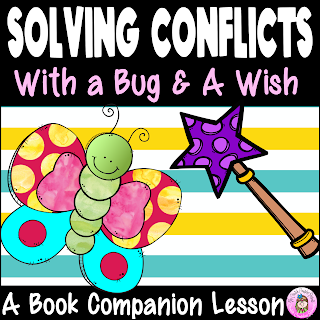Hey there! You know, kids often find themselves dealing with a whole bunch of different emotions. So, when I talk to my students about feelings, I like to compare them to the waves at the beach. Sometimes they're calm and gentle, and other times they crash down on us. Just like no two waves are the same, our feelings affect us in unique ways.
Expressing Through Coloring:
Whenever I have a student who's upset or worried, I've got this neat trick up my sleeve to help them calm down and relax—a coloring sheet. It's amazing how such a simple activity can let them channel their emotions and find comfort in being creative. I let them pick any colors they want and once they're done, I ask them to label the feelings they've expressed.
Uncovering Emotions with Colors:
For example, if their picture mostly shows sadness with lots of blue, they can color the "sad" box in blue too. And if they only feel a little shy, they can color the "shy" box with a touch of purple. This way, we have a starting point to talk about their emotions and really get into what they're experiencing.
Personal Reflection and Customization:
I've even made a version of the coloring sheet with blank boxes, so kids can fill in their own feelings. That way, they can really personalize the activity and take a deep look into their own emotional landscapes. It's pretty cool, right?
Versatile Applications:
These coloring sheets are like super-versatile tools that can be used in all sorts of situations. Whether I'm working with a student one-on-one, in small groups, or with the whole class, they always come in handy. Check out some of the ways I've used them:
- Calming Upset Students: When a student is upset, the coloring sheet is like a soothing escape for them. It helps them process their emotions and find some peace.
- Expressing Anger: For those kiddos dealing with anger, this activity is a fantastic way for them to let it out in a healthy and creative way.
- Facilitating Group Sharing: In times of conflicts between students, the coloring sheets become a cool medium for them to openly communicate, share their emotions, and show empathy towards each other.
- Supporting Grief and Loss: When we have grief counseling sessions, these sheets really come in handy. They provide a therapeutic outlet for children to express their emotions and start the healing process.
- Navigating Divorce and Separation: For kids going through tough times like divorce or separation, the coloring sheets provide a safe space for them to process their feelings and start healing.
- Assisting New Students: In groups for new students, these activities help them build emotional resilience. It's a way for them to express their anxieties and gradually adjust to their new school environment.
- Welcoming a New School Year: At the beginning of a school year, these coloring sheets come in super handy. They spark discussions about emotions, allowing students to share their hopes, concerns, and expectations. It sets the stage for a positive and supportive classroom atmosphere.
Helping kids work through their emotions brings so many awesome benefits:
- Emotional Awareness: Helps kids recognize and regulate their feelings effectively.
- Improved Emotional Intelligence: Develops understanding of emotions and enhances relationships.
- Stress Reduction: Reduces stress and promotes inner calm.
- Enhanced Problem-Solving Skills: Builds skills to address challenges effectively.
- Increased Resilience: Cultivates adaptability and perseverance.
- Improved Self-Expression: Empowers effective communication of emotions.
- Healthy Coping Mechanisms: Promotes constructive management of feelings.
- Positive Self-Identity: Boosts self-confidence and understanding of needs.
- Improved Academic Performance: Enhances focus and engagement in learning.
- Healthy Relationships: Fosters empathy and positive connections.
By incorporating coloring sheets into my teaching approach, I give children a fun and engaging way to navigate their emotions. It can be an easy distraction to help them open up about what they are experiencing. It's amazing how such a simple activity helps them identify, express, and understand their feelings, ultimately boosting their emotional well-being and resilience.
Ready to Use Resource:
If you would like a copy of this FREE Resource, you can find it on my...



































.JPG)
